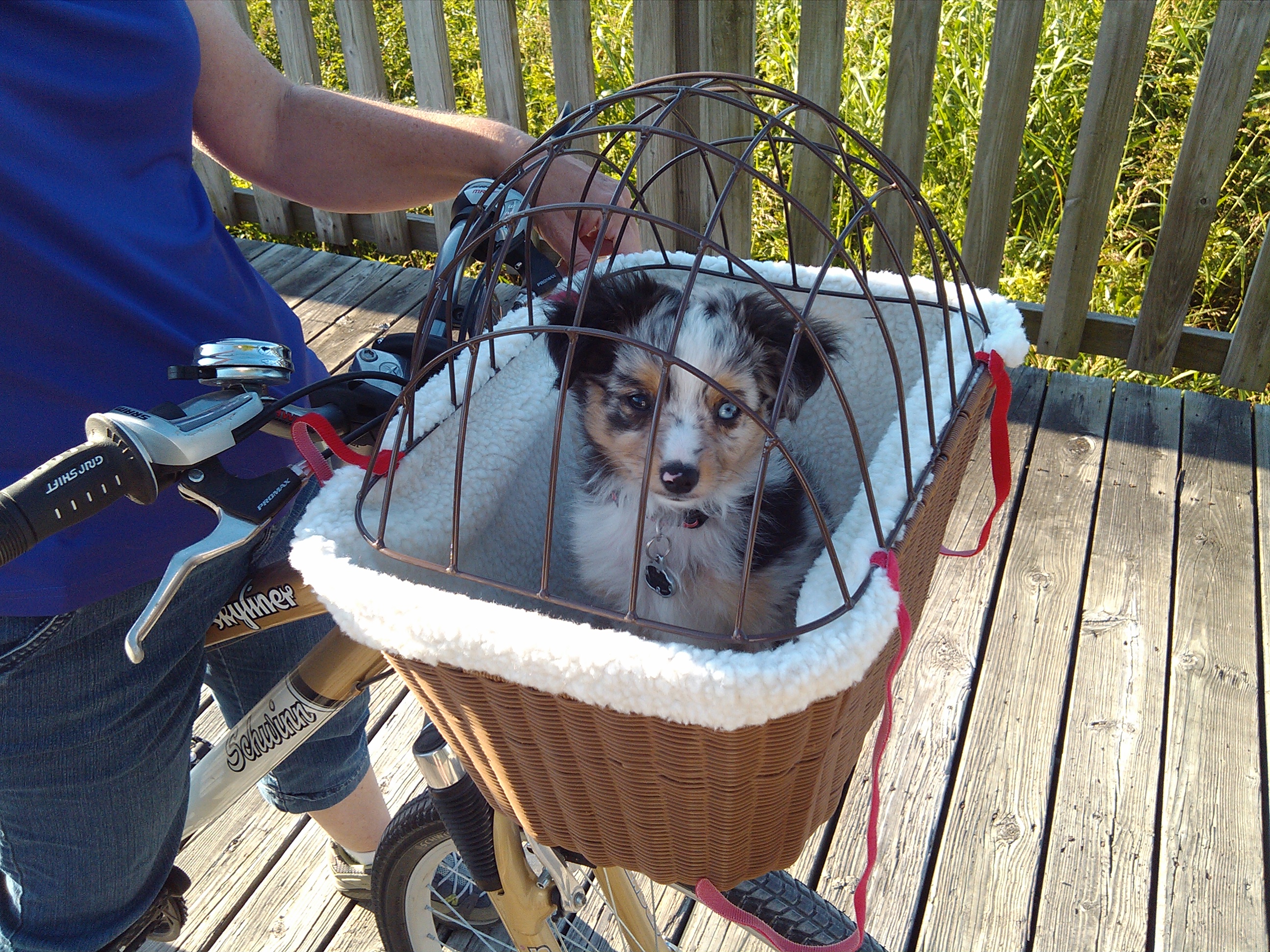Children and puppies are a match made in heaven, but sometimes the devil can sneak in when the adults aren’t looking.
When I was raising my now adult children, we lived on a farm and we always had a dog as a beloved pet and in our case, to work the cattle when needed. That was the beginning of our love for the herding breeds. At the time, we chose a Border Collie because of its ability to “eye” those Angus cattle that can be a little cantankerous and move them where we wanted them. Through the years, we had 3 very loving and talented BC’s that lived a full life with us.
My dad also had a Border Collie, but came upon a litter of Aussies in the area and one morning appeared at my house with a gorgeous little red merle female. As had happened in the past, he asked that I keep her and get her through her puppy stage until he could teach her to work the cattle. Patch never left us and became a pampered house dog living 16.5 years and starting our love for Aussies. She was registered as a Standard, but I now know she was a Mini Aussie standing about 17″ and weighing 30 pounds. As they say, the rest is history.
I said that to say, having a dog for the children to train and play with is very important for both and teaches them to respect animals and learn their nuances. My adult children both have pampered dogs in their homes now that they are starting their own families.
When you bring a puppy into your home that is a baby, it should be treated much like you would treat a skin baby and the children in the house should be supervised at all times lest the “devil” appear. Even though the puppies appear rambunctious sometimes, they are actually still pretty fragile in that first month that you have them.
Guide your children (and neighbor’s children) in how to keep the puppy safe and happy:
- Play times should be short stretches with naps in between.
- Children should be taught to sit or lay in the floor and let the puppy come to them rather chasing the puppy around the house lest they trip and fall on the puppy or give it a big scare from the chase.
- Children, even young adolescents, should not pick up or carry a young puppy. Wiggly puppies can be dropped very easily (even by adults) and legs broken or even worse they can be killed. Even if not injured seriously, the drama of a fall makes a negative impression that can last a lifetime. Mini Aussies, being very intelligent dogs, are also very sensitive and once they have a fearful experience, it is very difficult to get them past that event.
- Puppies should have a safe area that they can snuggle into away from the ruckus of children playing and being their normal selves. This is where a cozy crate in an out of the way corner works perfectly.
- Children should be taught never to “drag” a puppy from its safe place, but rather to encourage them to come out by laying in the floor and using a sing song voice to call them out.
- Children should be taught to rub or scratch a puppy on its neck or belly and not to pat its head. Patting a dogs head is never a good idea because the dog construes it as being punished and sometimes in adult dogs can result in a bite.
Seeing your children develop a friendship and bond with a dog is worth a million and makes memories that no one forgets. I can see my young children playing in my yard with their doggy friends and know they were precious moments. Herding dogs love children they have been raised with and will do their best to keep them safe, often rounding them up from perceived danger. Our BC’s knew the boundary where the children were allowed to play, and if they tried to venture further, you’d see a tail wagging and a dog circling to get them going back in the right direction.
Puppies and children are a special combination. As adults, we must just be alert with that new puppy and be sure the devil stays away.


